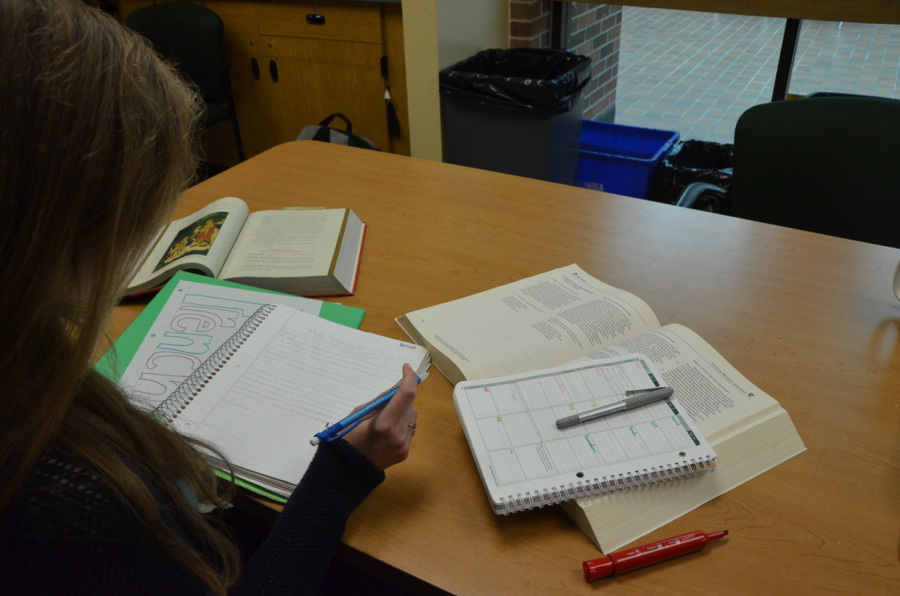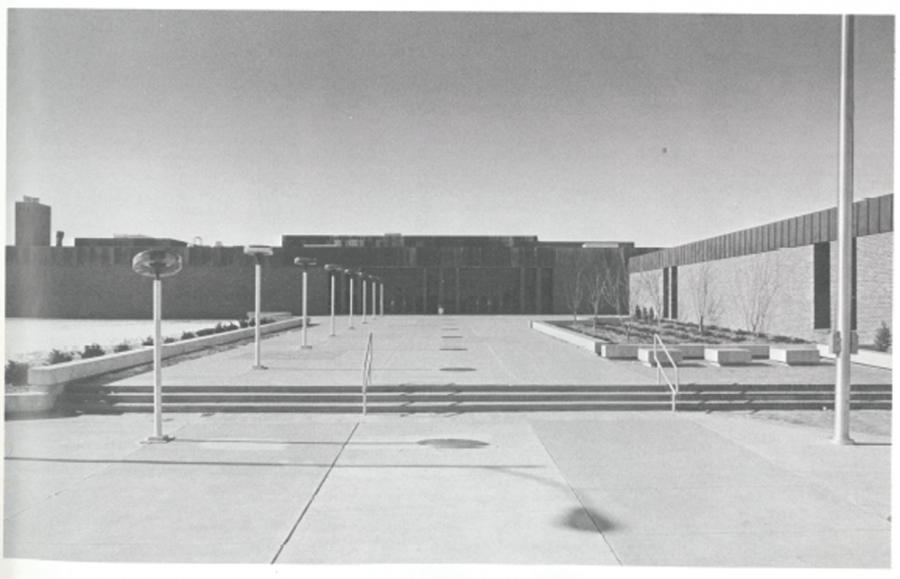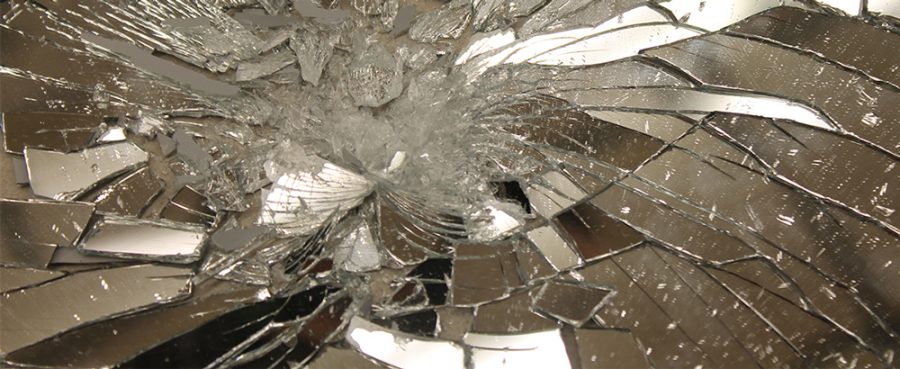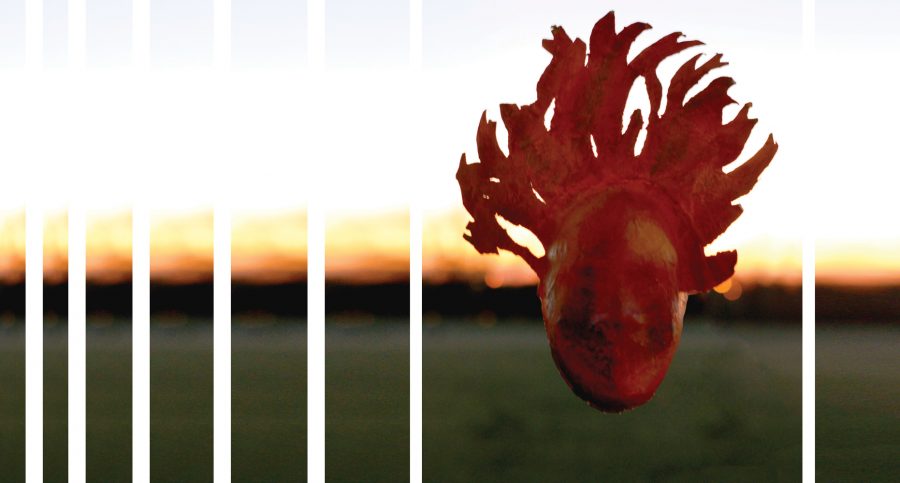[dropcap style=”flat” size=”5″ class=”A”]L[/dropcap]ast fall, 21 million students entered American colleges and universities as freshmen, according to the National Center for Education Statistics. Of the millions entering college in these four months, 80 percent are undecided in their major. Of those who declare a major, 50 percent will change their minds two to three times before they graduate, according to MyMajors.com.
However, for some the change is not a choice. After nearly four years and innumerable hours of practice, an injury forced math teacher Peter Willett to abandon his piano studies and change his life plan entirely.
“I was a music major at MU, [and taught] anywhere from 10 to 12 piano students at any given time,” Willett said. “My first love was classical music, and I thought I was going to be a professor somewhere teaching music, but my senior year of college I had some nerve damage to my arms and had to stop playing. Even though I was almost done with my degree I had to change my plans.”
Willett attended the University of Missouri-Columbia on a music scholarship and a swimming scholarship. During his senior year, the time he spent swimming for MU took away from practicing piano, and he recognized there wasn’t enough time for him to be competitive at swimming and piano simultaneously. He made the decision to focus solely on music.
“I went from practicing four to five hours a day with breaks to doing eight hours a day, so pretty much doubled the amount I was practicing. I wasn’t taking care of myself. I wasn’t exercising,” Willett said. “I think it was just a few months of tremendous increase in the amount I was playing piano. It was an overuse injury, and I was ignoring warning signs and playing through the pain till the point where it was and is chronic.”
In a survey at a Midwestern school, 79 percent of 330 incoming freshmen musicians reported a history of “playing-related pain,” according to Peabody Magazine. For Willett this pain was a symptom of nerve compression syndrome, a disorder two to five percent of Americans suffer from.
“In particular, musicians are perhaps more susceptible to ulnar nerve compression at the elbow,” Dr. Kyle R. Elbern, a surgeon at Massachusetts General Hospital, said. “This nerve is put under tension [and] stress when playing many of the string instruments, particularly when the elbow is in a flexed position which is common when playing many musical instruments.”
Nerve compression is a mechanical problem caused by abnormal pressure on a nerve, Dr. Elbern said, and repetitive trauma can cause nerves to become symptomatic. According to Piano Map, these injuries occur when tendons in the forearm are stressed by the repetitive motions performed while a pianist plays. These repeated motions can cause the tendon to rub against nearby ligaments and bones, which could lead to frayed, torn, thickened or bumpy tendons. According to the Johns Hopkins Peabody Institute, causes of these conditions include overuse, posture contrary to natural body positioning, accidental injury and differences in an individual’s anatomy or sensitivities.
“The most common type of nerve compression is carpal tunnel syndrome, or compression of the median nerve at the wrist, which can cause numbness or [tingling] of the thumb, index, middle and part of the ring finger,” Dr. Elbern said. “The second most common type is cubital tunnel syndrome, which is compression of the ulnar nerve at the level of the elbow, which can cause numbness or [tingling] in the ring or small fingers, as well as overall hand weakness and difficulty with dextrous functions in the hand and fingers.”
After diagnosis, Willett faced a life-changing circumstance. His injuries prevented him from continuing his studies and finishing his degree—and from playing piano.
Not only did Willett have to stop pursuing his previous dreams, but he also had to look into treatment options. There are two typical paths doctors follow when treating nerve damage: splinting and surgery. Depending on the way the nerve damage occurred and the severity of the damage, one or the other is prescribed.
“Surgical intervention often involves decompression of the affected nerve and can relieve pressure on the nerve, thereby allowing for nerve recovery and improved function over time,” Dr. Elbern said. “If untreated, progressive dysfunction in the ulnar nerve can lead to abnormalities with fine, precision motion of the hand and fingers, as the result of intrinsic muscle dysfunction—which could cause continued decline in the ability to play a musical instrument at a high level.”
Typically college students who must quit playing because of peripheral nerve damage are few and far between. Most students with neuromusculoskeletal problems get better with the right treatment and physical therapy. Even nerve problems can be amenable to such treatment. Michigan State University’s College of Music is prepared for situations similar to Willett’s.
“When we have music students that are injured, we make sure they have the accommodations they need in order to get better. That may range from taking an incomplete or moving a jury—performance testing—to another semester,” Judy Palac, associate professor of Music Education at MSU, said. “The student may be counseled into another major or to take considerable time off to retrain. Moving to a different instrument can help—for example, a brass player could move to an instrument with a bigger or smaller mouthpiece.”
Willett was passionate about becoming a music teacher, but he could no longer pursue his dream because of the extent of his injuries. Instead he had to look into other subject areas.
“Being a math teacher, the content wasn’t what I thought I was going to get into but I always knew I wanted to be a teacher,” Willett said. “Math is cool and all, but math doesn’t move me in the way that music does. I like getting to teach and working with kids and seeing them learn and to help them learn. Life’s gone on, but it was a real setback not to be able to follow my passion, my number one passion.”
While Willett’s dream of becoming a music professor came to an end abruptly, his injury didn’t halt his career plans completely. Although he was unable to become a music professor, he ultimately found a career that carried a piece of his passion.
“When I go to a St. Louis Symphony concert I still think, ‘Darn it I wish I could be doing that; I still miss it.’ That’s life, though,” Willett said. “You don’t always get your first choice, but I don’t want it to sound like I’m settling for sloppy seconds. I always wanted to be a teacher, and that element I still enjoy. I love teaching.”
By Caylea Erickson
Additional reporting by Abby Kempf [/vc_column_inner][/vc_column_inner][/vc_row_inner][TS_VCSC_Icon_Flat_Button button_style=”ts-color-button-emerald-flat” button_align=”center” button_width=”100″ button_height=”50″ button_text=”Previous” button_change=”true” button_color=”#ffffff” font_size=”18″ icon=”ts-awesome-chevron-left” icon_change=”true” icon_color=”#ffffff” tooltip_html=”false” tooltip_position=”ts-simptip-position-top” tooltipster_offsetx=”0″ tooltipster_offsety=”0″ margin_top=”20″ margin_bottom=”20″ link=”url:http%3A%2F%2Fwww.bearingnews.org%2F2015%2F04%2Fsmoke-and-mirrors%2F|title:Smoke%20and%20Mirrors|”]This article is the first in a series. Select “Next” to view the next article in the series, or “Previous” to view the preceding article.[TS_VCSC_Icon_Flat_Button button_style=”ts-color-button-emerald-flat” button_align=”center” button_width=”100″ button_height=”50″ button_text=”Next” button_change=”true” button_color=”#ffffff” font_size=”18″ icon=”ts-awesome-chevron-right” icon_change=”true” icon_color=”#ffffff” tooltip_html=”false” tooltip_position=”ts-simptip-position-top” tooltipster_offsetx=”0″ tooltipster_offsety=”0″ margin_top=”20″ margin_bottom=”20″ link=”url:http%3A%2F%2Fwww.bearingnews.org%2F2015%2F04%2Fchange-with-the-times%2F|title:Change%20with%20the%20Times|”]
However, for some the change is not a choice. After nearly four years and innumerable hours of practice, an injury forced math teacher Peter Willett to abandon his piano studies and change his life plan entirely.
“I was a music major at MU, [and taught] anywhere from 10 to 12 piano students at any given time,” Willett said. “My first love was classical music, and I thought I was going to be a professor somewhere teaching music, but my senior year of college I had some nerve damage to my arms and had to stop playing. Even though I was almost done with my degree I had to change my plans.”
Willett attended the University of Missouri-Columbia on a music scholarship and a swimming scholarship. During his senior year, the time he spent swimming for MU took away from practicing piano, and he recognized there wasn’t enough time for him to be competitive at swimming and piano simultaneously. He made the decision to focus solely on music.
“I went from practicing four to five hours a day with breaks to doing eight hours a day, so pretty much doubled the amount I was practicing. I wasn’t taking care of myself. I wasn’t exercising,” Willett said. “I think it was just a few months of tremendous increase in the amount I was playing piano. It was an overuse injury, and I was ignoring warning signs and playing through the pain till the point where it was and is chronic.”
In a survey at a Midwestern school, 79 percent of 330 incoming freshmen musicians reported a history of “playing-related pain,” according to Peabody Magazine. For Willett this pain was a symptom of nerve compression syndrome, a disorder two to five percent of Americans suffer from.
“In particular, musicians are perhaps more susceptible to ulnar nerve compression at the elbow,” Dr. Kyle R. Elbern, a surgeon at Massachusetts General Hospital, said. “This nerve is put under tension [and] stress when playing many of the string instruments, particularly when the elbow is in a flexed position which is common when playing many musical instruments.”
Nerve compression is a mechanical problem caused by abnormal pressure on a nerve, Dr. Elbern said, and repetitive trauma can cause nerves to become symptomatic. According to Piano Map, these injuries occur when tendons in the forearm are stressed by the repetitive motions performed while a pianist plays. These repeated motions can cause the tendon to rub against nearby ligaments and bones, which could lead to frayed, torn, thickened or bumpy tendons. According to the Johns Hopkins Peabody Institute, causes of these conditions include overuse, posture contrary to natural body positioning, accidental injury and differences in an individual’s anatomy or sensitivities.
“The most common type of nerve compression is carpal tunnel syndrome, or compression of the median nerve at the wrist, which can cause numbness or [tingling] of the thumb, index, middle and part of the ring finger,” Dr. Elbern said. “The second most common type is cubital tunnel syndrome, which is compression of the ulnar nerve at the level of the elbow, which can cause numbness or [tingling] in the ring or small fingers, as well as overall hand weakness and difficulty with dextrous functions in the hand and fingers.”
After diagnosis, Willett faced a life-changing circumstance. His injuries prevented him from continuing his studies and finishing his degree—and from playing piano.
Not only did Willett have to stop pursuing his previous dreams, but he also had to look into treatment options. There are two typical paths doctors follow when treating nerve damage: splinting and surgery. Depending on the way the nerve damage occurred and the severity of the damage, one or the other is prescribed.
“Surgical intervention often involves decompression of the affected nerve and can relieve pressure on the nerve, thereby allowing for nerve recovery and improved function over time,” Dr. Elbern said. “If untreated, progressive dysfunction in the ulnar nerve can lead to abnormalities with fine, precision motion of the hand and fingers, as the result of intrinsic muscle dysfunction—which could cause continued decline in the ability to play a musical instrument at a high level.”
Typically college students who must quit playing because of peripheral nerve damage are few and far between. Most students with neuromusculoskeletal problems get better with the right treatment and physical therapy. Even nerve problems can be amenable to such treatment. Michigan State University’s College of Music is prepared for situations similar to Willett’s.
“When we have music students that are injured, we make sure they have the accommodations they need in order to get better. That may range from taking an incomplete or moving a jury—performance testing—to another semester,” Judy Palac, associate professor of Music Education at MSU, said. “The student may be counseled into another major or to take considerable time off to retrain. Moving to a different instrument can help—for example, a brass player could move to an instrument with a bigger or smaller mouthpiece.”
Willett was passionate about becoming a music teacher, but he could no longer pursue his dream because of the extent of his injuries. Instead he had to look into other subject areas.
“Being a math teacher, the content wasn’t what I thought I was going to get into but I always knew I wanted to be a teacher,” Willett said. “Math is cool and all, but math doesn’t move me in the way that music does. I like getting to teach and working with kids and seeing them learn and to help them learn. Life’s gone on, but it was a real setback not to be able to follow my passion, my number one passion.”
While Willett’s dream of becoming a music professor came to an end abruptly, his injury didn’t halt his career plans completely. Although he was unable to become a music professor, he ultimately found a career that carried a piece of his passion.
“When I go to a St. Louis Symphony concert I still think, ‘Darn it I wish I could be doing that; I still miss it.’ That’s life, though,” Willett said. “You don’t always get your first choice, but I don’t want it to sound like I’m settling for sloppy seconds. I always wanted to be a teacher, and that element I still enjoy. I love teaching.”
By Caylea Erickson
Additional reporting by Abby Kempf [/vc_column_inner][/vc_column_inner][/vc_row_inner][TS_VCSC_Icon_Flat_Button button_style=”ts-color-button-emerald-flat” button_align=”center” button_width=”100″ button_height=”50″ button_text=”Previous” button_change=”true” button_color=”#ffffff” font_size=”18″ icon=”ts-awesome-chevron-left” icon_change=”true” icon_color=”#ffffff” tooltip_html=”false” tooltip_position=”ts-simptip-position-top” tooltipster_offsetx=”0″ tooltipster_offsety=”0″ margin_top=”20″ margin_bottom=”20″ link=”url:http%3A%2F%2Fwww.bearingnews.org%2F2015%2F04%2Fsmoke-and-mirrors%2F|title:Smoke%20and%20Mirrors|”]This article is the first in a series. Select “Next” to view the next article in the series, or “Previous” to view the preceding article.[TS_VCSC_Icon_Flat_Button button_style=”ts-color-button-emerald-flat” button_align=”center” button_width=”100″ button_height=”50″ button_text=”Next” button_change=”true” button_color=”#ffffff” font_size=”18″ icon=”ts-awesome-chevron-right” icon_change=”true” icon_color=”#ffffff” tooltip_html=”false” tooltip_position=”ts-simptip-position-top” tooltipster_offsetx=”0″ tooltipster_offsety=”0″ margin_top=”20″ margin_bottom=”20″ link=”url:http%3A%2F%2Fwww.bearingnews.org%2F2015%2F04%2Fchange-with-the-times%2F|title:Change%20with%20the%20Times|”]


















































































